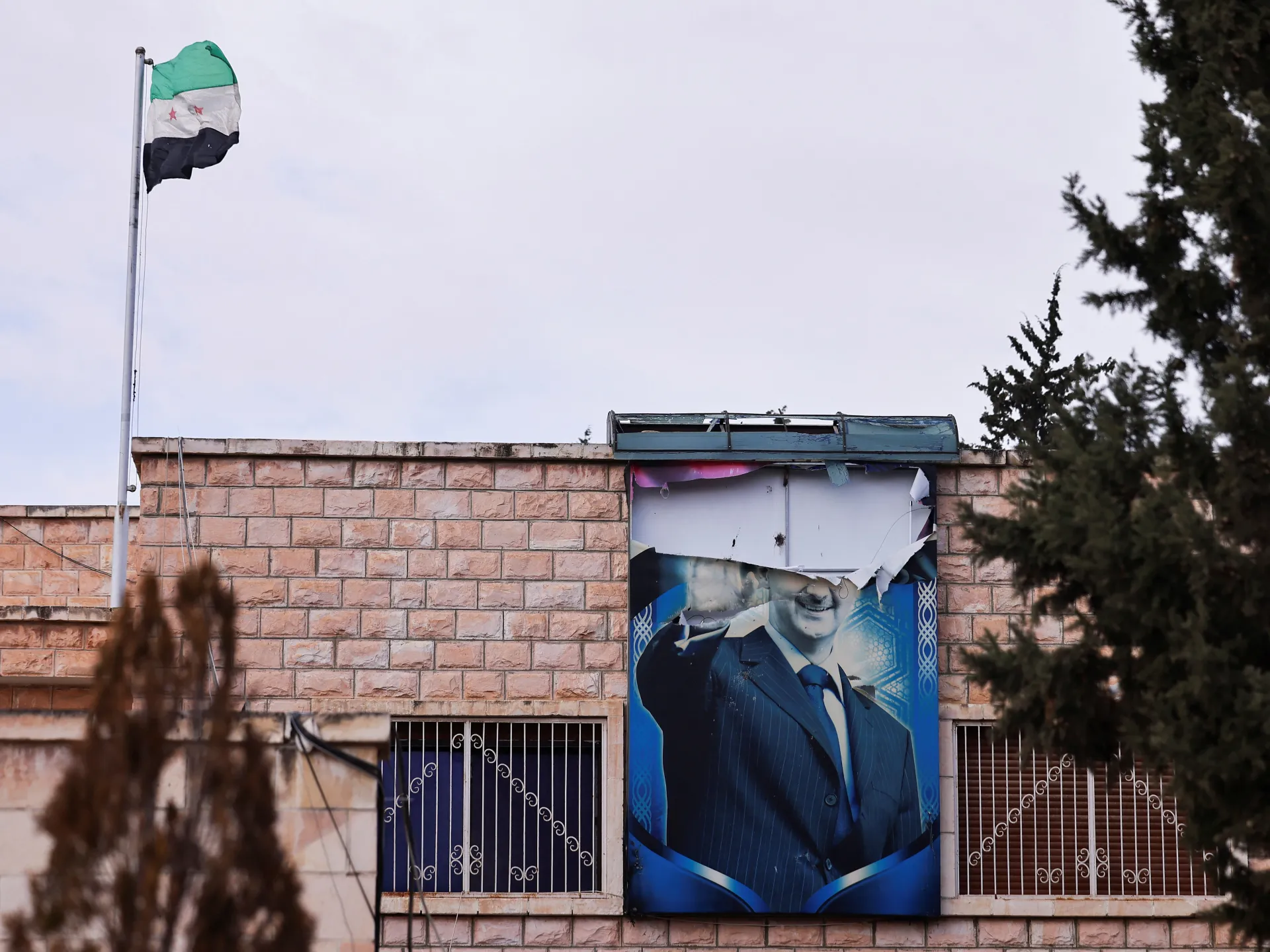Al-Assad inner circle plotting Syrian uprisings from Russian exile: Report | Syria’s War News
Former loyalists to deposed Syrian ruler Bashar al-Assad are funnelling millions of dollars to tens of thousands of potential fighters in a bid to start uprisings against the country’s fledgling government, a Reuters investigation has found.
The plot, uncovered through interviews with 48 people and financial documents reviewed by the Reuters news agency, comes as Syria marks one year since al-Assad’s fall and as the new government under President Ahmed al-Sharaa gains international legitimacy.
Recommended Stories
list of 3 itemsend of list
The schemes threaten to ignite new sectarian violence at a pivotal moment in the country’s fragile transition.
Two men once closest to al-Assad – Major-General Kamal Hassan, his former military intelligence chief, and billionaire cousin Rami Makhlouf – are competing from exile in Moscow to build militias among Syria’s Alawite minority, the sect long associated with the fallen dynasty, according to the Reuters findings.
Together with other factions, they are financing more than 50,000 fighters in hopes of winning their loyalty.
Hassan, who ran the regime’s notorious military detention system, has been making relentless calls and sending voice messages to commanders from his Moscow villa, according to people close to him interviewed by Reuters.
Reuters reported that he seethes about his lost influence and outlines grandiose visions of how he would rule coastal Syria, home to most of the country’s Alawite population and al-Assad’s former power base.
“Be patient, my people, and don’t surrender your arms. I am the one who will restore your dignity,” Hassan said in one WhatsApp message reviewed by Reuters.
Makhlouf, who once used his business empire to fund the dictatorship during the ruinous 14-year civil war before falling out with his more powerful relatives and spending years under house arrest, now portrays himself in conversations as a messianic figure who will return to power after ushering in an apocalyptic final battle, according to the investigation.
A prize for both men is control of a network of 14 underground command rooms built around coastal Syria towards the end of al-Assad’s rule, along with weapons caches, Reuters found.
Photos seen by the news agency show rooms stocked with assault rifles, ammunition, grenades, computers and communications equipment.
Hassan claims control of 12,000 fighters and has spent $1.5m since March, while Makhlouf claims at least 54,000 fighters and has spent at least $6m on salaries, according to internal documents and financial records reviewed by Reuters.
However, commanders on the ground said fighters are paid a pittance – between $20 and $30 monthly – and are taking money from both sides.
Despite the plotting, prospects for a successful uprising appear low.
The two exiles are virulently at odds with one another, Russia has withheld support, and many Alawite mistrust the pair, Reuters found.
Moscow, which granted al-Assad asylum, has since pivoted towards courting al-Sharaa’s government to preserve its vital Mediterranean military bases on Syria’s coast in Tartous – the same region the plotters seek to control.
Syria’s new government is deploying its own counter-strategy through Khaled al-Ahmad, an Alawite and childhood friend of al-Sharaa who switched sides mid-war.
His task is to persuade former soldiers and civilians that their future lies with the new Syria.
Ahmed al-Shami, governor of the coastal Tartous region, told Reuters that Syrian authorities are aware of the plots and ready to combat them.
“We are certain they cannot do anything effective, given their lack of strong tools on the ground,” he said.
The revelations come as Syria navigates multiple challenges a year after al-Assad’s overthrow, including continuing Israeli military incursions, its demand for a buffer for Israel between the countries, and sectarian tensions that erupted into deadly violence in March and July.
This week, the country hosted a UN Security Council delegation in its first-ever visit, signalling al-Sharaa’s growing international standing as he seeks to stabilise the fractured nation.
